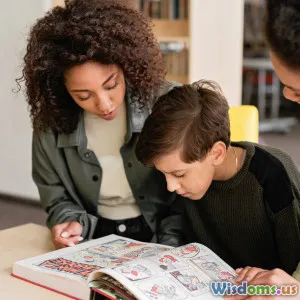
Innovative Teaching Methods for Modern Classrooms
5 min read Explore cutting-edge teaching strategies that enhance learning experiences in contemporary classrooms. (0 Reviews)
Innovative Teaching Methods for Modern Classrooms
In the rapidly evolving landscape of education, the need for innovative teaching methods has never been more crucial. Modern classrooms are no longer just about lectures and textbooks; they are dynamic environments that embrace technology and foster interactive learning experiences. This article explores various innovative teaching methods that are reshaping education and helping students thrive in an increasingly complex world.
1. Flipped Classroom
The flipped classroom model reverses traditional teaching methods by delivering instructional content outside the classroom, often through online videos. This allows classroom time to be dedicated to interactive activities, discussions, and problem-solving. For example, teachers can assign video lectures for homework and then use class time for collaborative projects. This method not only promotes student engagement but also allows for personalized learning experiences.
2. Project-Based Learning (PBL)
Project-Based Learning emphasizes real-world challenges and encourages students to engage in projects that require critical thinking, creativity, and collaboration. Students work in groups to explore a topic, conduct research, and present their findings. For instance, a science class might investigate environmental issues in their community, allowing students to connect academic content with real-life applications. This method fosters deeper understanding and retention of knowledge.
3. Gamification
Incorporating game elements into the learning process can significantly enhance student motivation and engagement. Gamification involves using game-like features such as points, badges, and leaderboards to incentivize learning. Educational platforms like Kahoot! allow teachers to create quizzes that feel like games, making learning more enjoyable. The competitive aspect of gamification encourages students to participate actively and strive for improvement while reinforcing their knowledge.
4. Inquiry-Based Learning
Inquiry-Based Learning (IBL) encourages students to ask questions, conduct investigations, and build knowledge through exploration. This approach shifts the focus from teacher-led instruction to student-driven inquiry. For instance, a history teacher might pose a question about a significant event, prompting students to research and discuss various perspectives. This method cultivates critical thinking skills and fosters a sense of curiosity.
5. Collaborative Learning
Collaborative learning emphasizes teamwork and social interaction among students. By working together on tasks or projects, students develop communication and interpersonal skills while learning from each other. Techniques such as think-pair-share or group discussions can be integrated into lessons, allowing students to share ideas and perspectives. This method not only enhances understanding but also helps build a supportive learning community.
6. Differentiated Instruction
Differentiated instruction is a teaching approach that tailors learning experiences to meet the diverse needs of students. This can involve varying the content, process, or product based on students' readiness levels, interests, and learning profiles. For example, a teacher might provide different reading materials for students at varying levels of comprehension. This approach ensures that all students can engage meaningfully with the curriculum.
7. Technology Integration
Technology plays a pivotal role in modern education, offering tools that enhance learning and engagement. Interactive whiteboards, educational apps, and virtual reality experiences can make lessons more engaging and immersive. For instance, using virtual reality to explore historical sites or scientific phenomena provides students with firsthand experiences that deepen their understanding.
Conclusion
Innovative teaching methods are essential for creating engaging and effective learning environments in modern classrooms. By embracing approaches like flipped classrooms, project-based learning, and gamification, educators can enhance student engagement and foster a love for learning. As we continue to navigate the challenges of education, it's imperative to stay abreast of new strategies that meet the diverse needs of today's learners. In doing so, we empower the next generation to thrive in an ever-changing world.
Rate the Post
User Reviews
Popular Posts





















